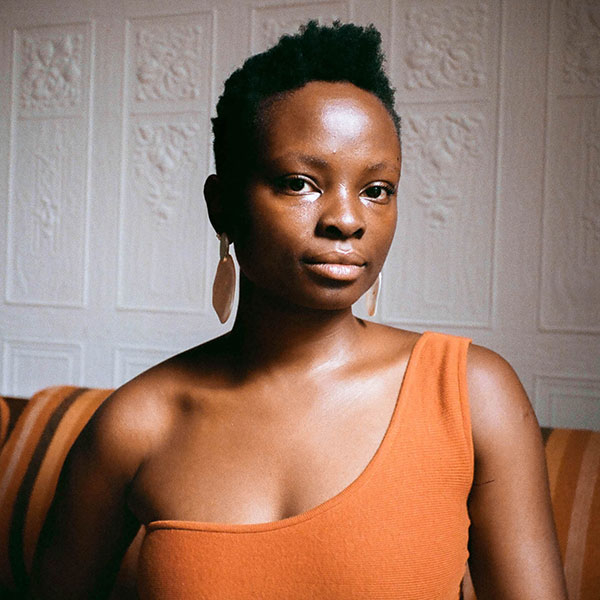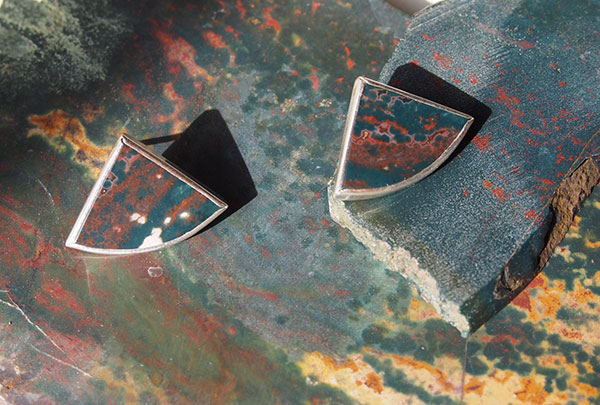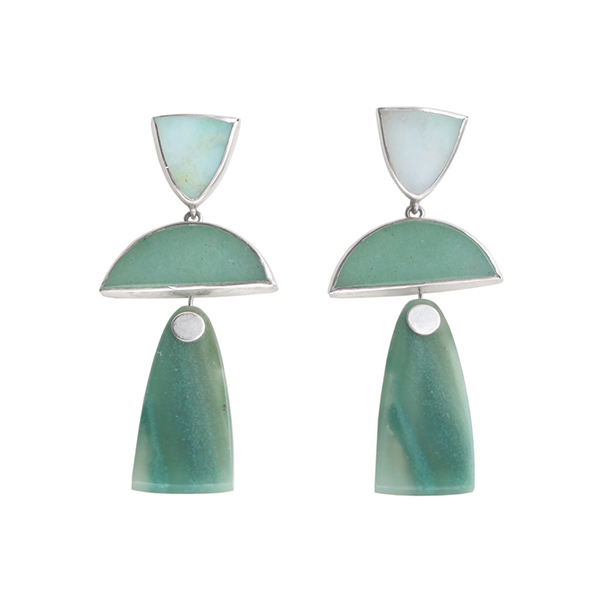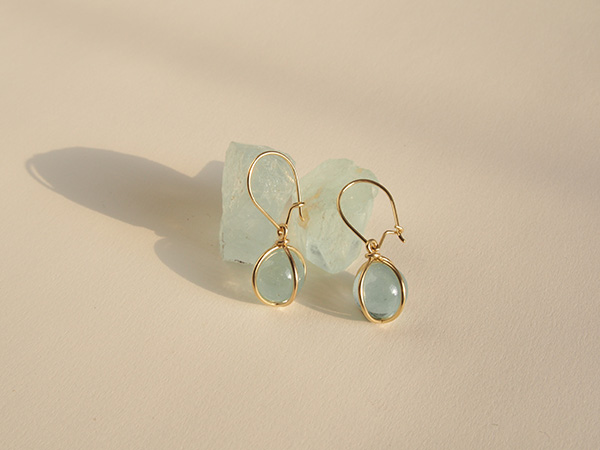
It’s said that Michelangelo said that he could see the angels in the stones he was carving, and that is similar to how jewelry designer Ope Omojola (pictured) feels when she picks up a piece of ocean jasper or mtorolite.
“That’s how I got hooked on lapidary in the first place: I’m a control freak,” Omojola admits. “I want to have a say in every element. There are so many beautiful stones. I just want to work with them and start from scratch. I don’t want to start from something someone has provided to me. I like having a say about what shapes I see or what form I thought of from that stone.”
Omojola—who recently won the 2022 Halstead Grant for an emerging jeweler whose business plan shows clear goals and growth potential—also admits she can be hard on things. That is one more reason why the founder of Octave Jewelry says she likes to work in a sculptural way, using stones as her guide.

Despite her recent achievement, Omojola says her life in jewelry was “not inevitable.” Rather, she jokingly says, “there were wiser choices.” But jewelry kept coming back into her world in subtle ways over time.
Omojola was born in Nigeria, and that heritage informed part of her career and thinking about her life’s work. Omojola says she was always a maker, even as a kid. She would make up stories and perform them with friends. She learned to cook around age 8 and experimented with recipes. Her mother, Omojola’s style icon, taught her how to sew when Omojola was in middle school, which led her to start making clothing.
While she was living in Nebraska, Omojola says she began making jewelry from beads, something that was accessible to her because her first job was in a bead store. “I had a great employee discount,” she says. She made earrings, bracelets, and necklaces galore. Because she loved working with her hands, Omojola says she used paper and other materials to make her own beads and other jewelry supplies.

By the time she got to college, Omojola says her parents wanted her to go the safe route and become a doctor or another kind of professional. Instead, Omojola became an anthropology student who also studied fashion on her own time.
“I picked anthropology because it was vague,” Omojola says. “It’s a hybrid of so many disciplines: History, social science, poetry, all of those things. Abstractly, it’s a more poetic understanding of why people do things. You’re trying to understand their behavior.… You focus on what you can observe in people, the history you can find.”
How people dress and how they adorn themselves is another key part of anthropology, so her interest in fashion from her teen years was always a part of her life, Omojola says. She started working in retail, e-commerce, merchandising, and logistics, but there was something about it that never sat well with this self-admitted control freak.

“I couldn’t find a place to work or land that felt good for me or a place where I felt like I was going to grow,” Omojola says. “I wanted my creative process to myself as opposed to working adjacent to someone else’s creative process.”
Around this time, Omojola received a gift certificate to the 92nd Street Y in New York City and started taking jewelry and ceramics classes. She loved both, especially working with clay. But jewelry, particularly earrings, spoke to her.
“it’s a compulsion,” Omojola admits. “I sometimes don’t think I have a voice in this. Doing something else might be easier or simpler, but I can’t help myself.”
Her work is a tribute to the stones, which she says fascinate her because of their history, their roughness, their potential.
“[Jewelry] is a beautiful accessory to a life that’s being lived well,” Omojola says.
Top: Ope Omojola won the 2022 Halstead Grant, in part, because her work “creates wearable sculptures that speak to personal style, history, and sentimentality,” the grant award said (photos courtesy of Octave Jewelry).
Follow me on Instagram and Twitter
- Subscribe to the JCK News Daily
- Subscribe to the JCK Special Report
- Follow JCK on Instagram: @jckmagazine
- Follow JCK on X: @jckmagazine
- Follow JCK on Facebook: @jckmagazine







